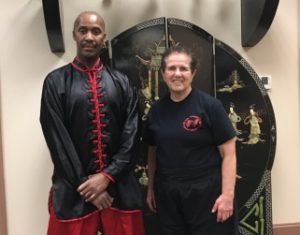Tai Chi is a slow-motion, low-impact set of movements that benefits the mind and the body. Some of the ways it does so include improved balance and flexi-bility, better focus and concentration, stress reduction, and overall well-being. The movements are done in a slow, relaxed, and coordinated manner that helps increase circulation to the brain and the internal organs. Tai Chi also helps regulate the nervous system, which sends signals to the brain. Each movement has a specific name and purpose and is done in combination with breathing and footwork.
Tai Chi involves moving the waist, hips, knees, and ankles, all of which are important for overall mobility. Indeed, as people get older, being able to maintain mobility is an important factor in deter-mining their independence.
The upper body movements, for instance, help participants maintain a range of motion and flexibility in the shoulders and neck. These areas are important to uphold the ability to reach items in high places above the head, such as cabinets and shelves, without incident.
The repetitive performance of the movements helps the brain’s cognitive function and the sympathetic nervous system (part of the autonomic nervous system), which is important in stressful and volatile situations. An example would be when people trip before they actually fall, when the sympathetic ner-vous system sends the body’s major organs and muscles a quick message and burst of energy to initiate a rapid response. As the individual trips, one hand or both hands reach out. One leg or both legs respond by coming up higher or landing lightly. These responses are initiated through the sympathetic nervous system.
Another benefit of Tai Chi is social inter-action, which is also important for mental health. The group classes bring people together.
The movements require concentrating on the present moment. During this time, the participants’ minds are free from worry and over-thinking, which helps with reducing stress and lowering blood pressure.
For people with mobility issues, Tai Chi can be carried out while sitting in or standing near a chair. Overall, Tai Chi can increase one’s mental and physical heath for many years.
There are several different styles of Tai Chi ― Yang, Wu, Sun, and Chen, just to name a few. The style taught at Sher-wood Oaks is the Yang short form, which consists of 24 postures. The Yang long form involves 108 postures. Resi-dents should be sure to let me know when they’re ready for that one!
